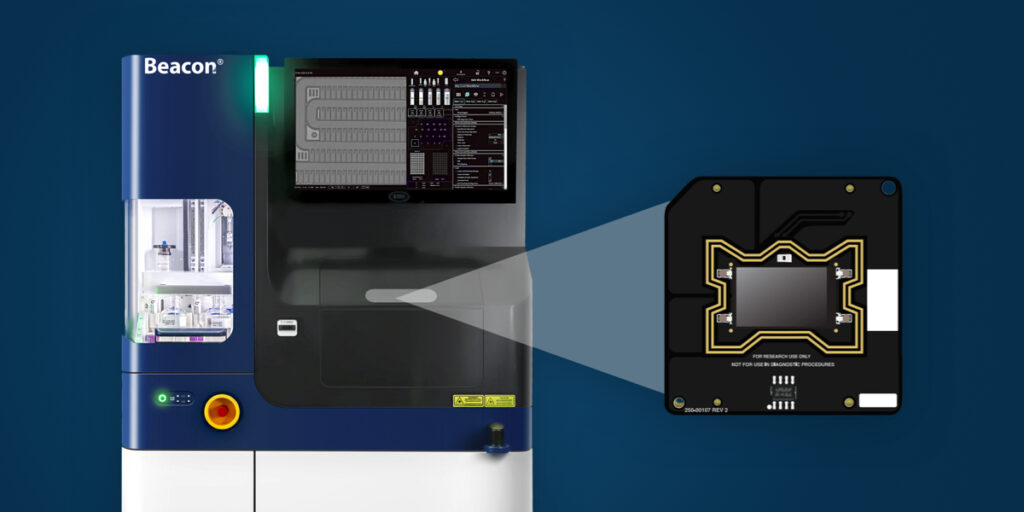In the biopharmaceutical industry, where lengthy antibody therapeutic development timelines can delay critical treatments for patients in need, accelerating cell line development (CLD) has never been more crucial. The Beacon® optofluidic system by Bruker Cellular Analysis has emerged as a revolutionary platform, offering unparalleled efficiency in CLD processes by enabling a suite of powerful assays under bioreactor-like conditions, all within a few days of single-cell cloning.
Let Light and Data Guide Your Selection
At the heart of the Beacon platform lies Optoelectronic Positioning (OEP), a cutting-edge technology that uses light to gently manipulate cells and particles. This innovative approach allows for the precise handling of cells, minimizing stress and preserving their viability. The Beacon platform further distinguishes itself as a class-leading assay platform, utilizing a multichannel fluorescent microscope to conduct sophisticated assays within NanoPen chambers. These chambers are designed to interrogate cells and their secreted products at the nanoscale, providing critical insights into growth characteristics, productivity, and product quality—measurements that are essential for rapidly and confidently executing CLD campaigns.
To further extend the power of OEP, the Beacon system offers a capability called Selective Cell Cloning. This technique enables users to make data-driven decisions about which cells to select for penning using OEP, based on fluorescent stains that probe markers of interest. For example, stains can identify dead or dying cells, which should be avoided, and cells that are actively secreting antibodies, which are prime candidates for further development.
Accelerating CLD Timelines by Enriching for Healthy Producers
A recent publication by Merck showcases the successful use of the Beacon platform and Selective Cell Cloning to assay for healthy, secreting cells before OEP, thereby improving clone productivity across campaigns. This approach reduces the time and resources needed to achieve optimal results, even with low-viability samples. As the authors note, “[t]he combination of these two protocols has a synergistic effect, and as they help discarding the dead and nonproducing populations prior to cloning, they increase the throughput power of the Beacon platform and the detection of super productive clones.”
Similarly, Amgen previously demonstrated that the Beacon system can deliver equal or better productivity while cutting campaign timelines by up to 30% when utilizing Selective Cell Cloning.
These successes underscore the role that Selective Cell Cloning can play in streamlining CLD campaigns and enhancing clone performance. Moreover, Selective Cell Cloning is just one of many powerful assays available to elevate clone selection during the earliest stages of CLD on the Beacon platform. For more insights on how the Beacon platform optimizes selected clones for productivity and quality, explore this E-book.


